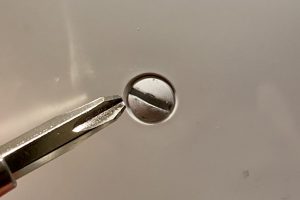Filaggrin–a protein important for skin barrier function–can be said to have changed the world. The revelation that mutations in the gene that codes for filaggrin are strongly associated with atopic dermatitis (AD) opened the door to a new understanding of the disease.1 Arguably, for the first time ever, there was a tangible target, a way to think about this very complex and multifaceted condition.
In 2014, the results of a promising pilot study added tremendous weight to the notion that a deficient skin barrier–sometimes referred to as “leaky skin”–could be the key to unlocking the pathogenesis of AD. The study revealed that daily application of moisturizer in 124 high-risk babies actually seemed to reduce the incidence of AD by about 50% with no adverse events reported.2 This was underscored by a powerful study that showed increased risk for developing peanut allergies in children with more severe AD: it was explained as likely occurring through via transcutaneous sensitization.3 In other words, the leaky skin was allowing allergens to enter through the skin in an abnormal way.4
If leaky skin is indeed at the heart of AD and food allergies, it follows that repairing the skin barrier could prevent the development of both. Indeed, beyond the American 2014 study noted above, a similar Japanese study that same year also found that daily application of a moisturizer in 118 neonates resulted in 32% fewer babies developing AD at 32 weeks than the control group.5 And, in 2019 another small study of 100 infants found the suggestion of a protective effect for those using a ceramide-based moisturizer compared to controls.6
While these three studies were relatively small, we have been waiting for larger studies to confirm these findings. Unfortunately, the first larger study has recently been published and does not appear to support this phenomenon. A multi-center randomized controlled trial in the UK studied more than 1300 neonates at high risk of developing AD. They were randomly assigned to the application of a daily moisturizer (a cream or a gel) for the first year of life or a stand skin care control group. They did not find evidence that daily moisturizer could prevent AD, and in fact, found a slightly increased risk of skin infection in the moisturizer group.7
How do we explain this discrepancy? First and foremost, it is important to note that this is an excellent example of the limits of evidence-based medicine. While we had 3 randomized controlled trials showing one thing, we now have a third that disagrees. What is the truth? Ideally, we will progress to the point of precision medicine, where we will so deeply understand the mechanisms of health and disease that such epidemiology will simply become irrelevant.8 In the meantime, however, we are left with a few possibilities. The first is that there are different subtypes of AD that may or may not respond to this approach. Indeed, in both of the positive studies, we saw only a 30-50% preventative effect, not 100%. So, presumably, moisturizers could help with certain patients but not others. Because we don’t understand these groups, it can be as opaque as trying a Phillips screwdriver blindly on a bag of screws: some may fit, but flat-head type screws will not work at all. If one is unlucky, most of the bag might be filled with flat-head type screws and the conclusion would be: screwdrivers don’t work. With a better understanding of the mechanism, it would become clear that the Phillips head screwdriver works with Phillips-type screws and when this condition is met, essentially 100% of the screws should fit:

Another possibility along a similar line is that the intervention was at fault. Indeed, in the 2014 study by Dr. Simpson and others, one of three moisturizers was used: sunflower seed oil, a petrolatum-based ointment, or a cream. In this larger study, a cream or a gel were used, but were different than what had been studied before and were chosen, to quote the study directly: “because they are commonly used in the UK National Health Service and have a high degree of acceptability to parents.” Arguably, these are not great reasons to choose a moisturizer. Alas, even the authors admit that “…a more sophisticated emollient formulation might potentially have a protective effect.”
In sum, the jury is still out on whether or not moisturizers can prevent AD. We need to refine our definition of moisturizers to pick the best candidates for skin barrier support and we need to explore the possibility of certain subgroups that will indeed respond to this approach. While discouraging, this study certainly does not negate the prior ones that suggested moisturizers may provide a means to prevention: it merely represents another data point to understand.
REFERENCES:
1. Dennin M, Lio PA. Filaggrin and childhood eczema. Arch Dis Child. 2017;102(12):1101-1102.
7. Chalmers JR, Haines RH, Bradshaw LE, et al. Daily emollient during infancy for prevention of eczema: the BEEP randomised controlled trial. Lancet. February 2020. doi:10.1016/S0140-6736(19)32984-8
